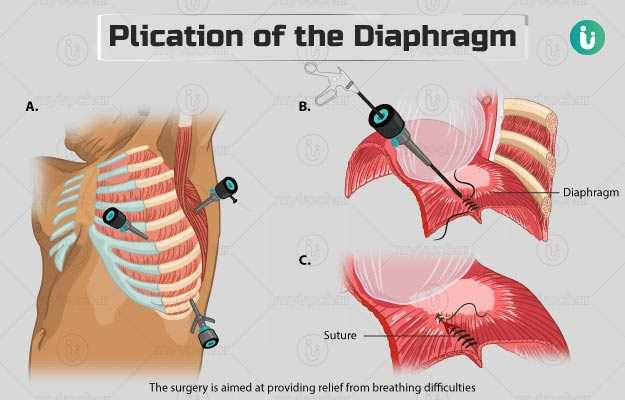Summary
Plication of the diaphragm is a surgery performed in the individuals who have to make extra efforts for breathing due to paralysis of the diaphragm. The diaphragm is a muscular sheet located between the chest and the abdominal cavities. It is a crucial part of the breathing process. While breathing in air, diaphragm pushes itself into the abdominal cavity, allowing the lungs to expand and take in more air. However, diaphragm paralysis affects one or both sides of the diaphragm, which in turn affects the ability of the lungs to expand and fill with air.
During this surgery, the paralysed part of the diaphragm is lowered by one or two ribs and stitched to the inner side of the chest wall. You can expect a hospital stay of up to seven days after the surgery.










































